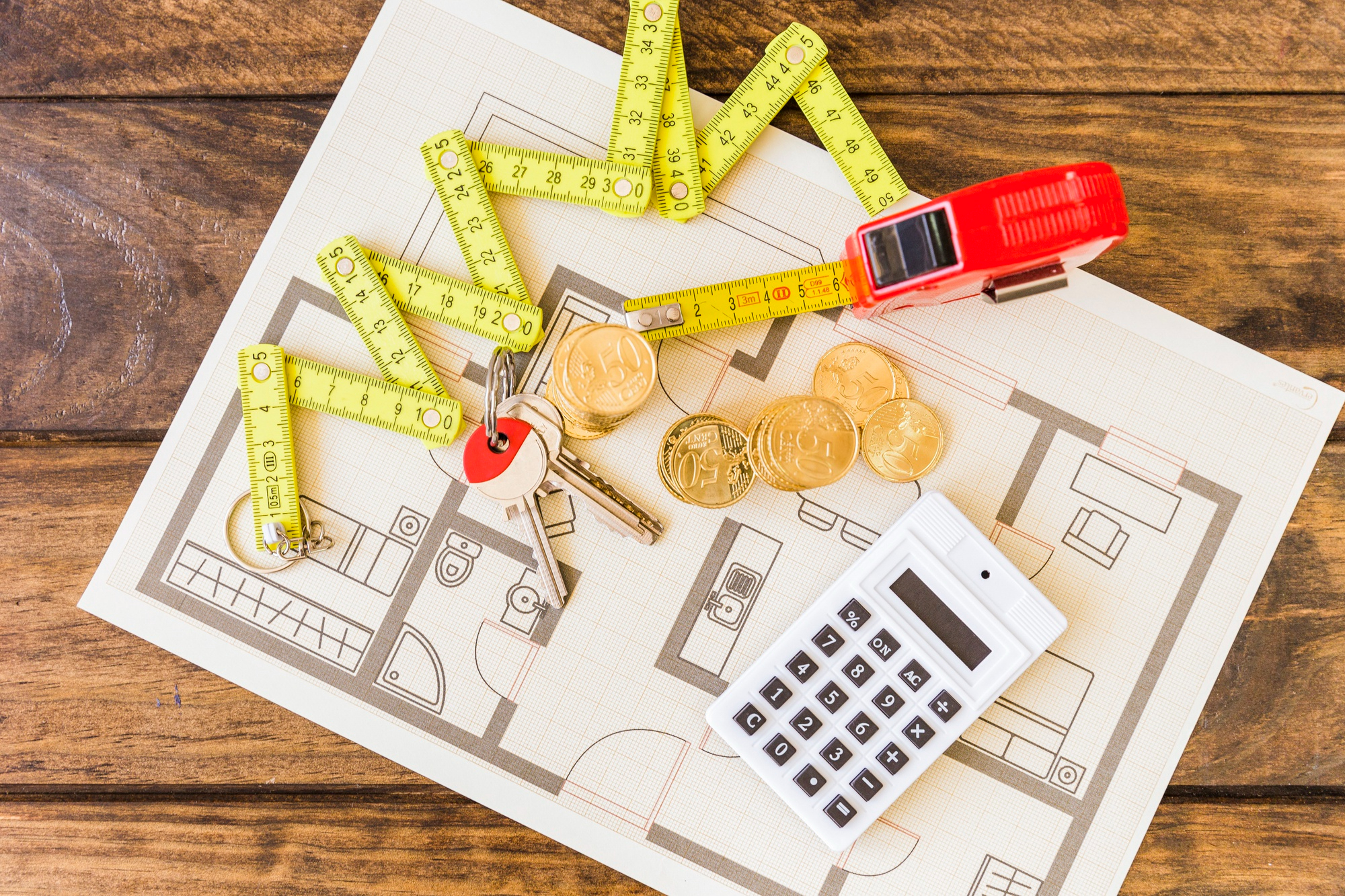Understanding the costs associated with home renovation is crucial for effective planning and budgeting. This article explores the various expenses involved in renovating a home in the Philippines, including materials, labor, and additional costs. Get a clear picture of the financial aspects to ensure a successful renovation.
Budget Planning and Estimation
Budget planning and estimation are the foundational steps in any home renovation project. Begin by conducting a thorough assessment of your financial capacity and defining the scope of the renovation. This involves determining the areas to be renovated, the level of modifications required, and the desired quality of materials and finishes. Detailed planning includes breaking down the total cost into specific categories such as labor, materials, permits, and contingency funds. Using tools such as cost calculators or consulting with professionals can provide more accurate estimates and help set realistic financial expectations.
A well-prepared budget serves as a roadmap throughout the renovation process. It helps in making informed decisions about where to allocate resources and identifies potential cost-saving opportunities. Regularly updating and reviewing the budget ensures that you stay on track and can adjust for any unforeseen expenses. Proper budget planning not only prevents financial strain but also contributes to the timely and successful completion of the project. By prioritizing a detailed budget from the outset, homeowners can navigate the renovation process with confidence and clarity.
Material Selection and Sourcing
Material selection and sourcing play a crucial role in determining both the cost and quality of a home renovation project. When choosing materials, consider the following factors:
- Cost: Compare prices between different suppliers and materials to find the best value for your budget. Opt for cost-effective yet durable options to maximize your investment.
- Quality: Evaluate the durability, maintenance requirements, and aesthetic appeal of materials. Higher-quality materials may have a higher upfront cost but can save money in the long run due to their longevity.
- Availability: Check the availability of materials locally versus imported options. Local materials may be more readily available and cost-effective, while imported materials might offer unique finishes but could incur additional shipping costs and longer delivery times.
Sourcing materials involves finding reliable suppliers who can provide the chosen materials at competitive prices. Here are some steps to follow:
- Research Suppliers: Identify and research multiple suppliers to compare prices, quality, and reliability. Look for reviews and recommendations from other homeowners or contractors.
- Request Quotes: Obtain detailed quotes from different suppliers to understand the cost breakdown and negotiate better deals. Ensure that quotes include delivery costs and any additional fees.
- Inspect Samples: Whenever possible, inspect samples of materials before making a purchase. This allows you to verify the quality and match of materials to your renovation vision.
- Plan for Storage: Consider the storage requirements for materials. Ensure that you have a suitable place to store them safely until they are needed for the renovation process.
By carefully selecting and sourcing materials, homeowners can balance cost and quality, ensuring that their renovation project meets both their budget and aesthetic goals. Proper planning and research in this phase can lead to significant savings and a more satisfactory renovation outcome.
Labor Costs and Contractor Fees
Labor costs and contractor fees constitute a significant portion of the overall renovation budget. It’s essential to understand the different components that contribute to these costs to manage your expenses effectively. Here’s a simplified table that outlines the typical elements involved:
| Component | Description | Estimated Cost |
| Skilled Labor | Carpenters, electricians, plumbers, etc. | Varies by expertise |
| Unskilled Labor | Helpers, general laborers | Lower hourly/daily rates |
| Contractor Fees | Project management, coordination, overhead | Percentage of total cost |
Managing labor costs requires a strategic approach:
- Hiring Skilled Workers: Skilled labor, such as carpenters, electricians, and plumbers, is essential for high-quality work. These professionals typically charge higher rates due to their expertise and experience. It’s crucial to verify their credentials, check references, and review past work to ensure they meet your standards.
- Negotiating Wages: When hiring unskilled labor or general workers, there is more room for negotiation. Compare rates from different workers or labor agencies to find competitive pricing. Clear communication about job expectations and timelines can also help in negotiating fair wages.
- Contractor Selection: Selecting a contractor involves evaluating their fee structure. Contractors may charge a flat fee, hourly rate, or a percentage of the total project cost. Understand what services are included in their fee, such as project management, coordination, and supervision of labor. Get detailed quotes from multiple contractors to compare their fees and services.
To ensure you get the best value for your money, consider the following steps:
- Detailed Contracts: Always have a detailed contract that outlines labor costs, payment schedules, and project timelines. This document protects both parties and ensures transparency.
- Regular Communication: Maintain regular communication with your contractor to stay updated on project progress and address any issues promptly. This helps in managing labor efficiently and avoiding misunderstandings.
- Monitoring Work Quality: Regularly monitor the quality of work being done by both skilled and unskilled labor. Address any concerns immediately to prevent costly rework or delays.
By understanding and managing labor costs and contractor fees effectively, homeowners can ensure their renovation project stays within budget while maintaining high standards of workmanship. Proper planning and clear agreements with contractors and laborers are key to achieving a successful renovation outcome.
Permits and Regulatory Fees
Navigating the permit requirements for home renovation in the Philippines is a critical aspect of the planning process. Before commencing any renovation work, it’s essential to determine which permits are necessary for your specific project. These permits typically include building permits, electrical permits, and plumbing permits, among others. The requirements and procedures can vary depending on the scale of the renovation and the local regulations in your area. It’s advisable to consult with local government offices or a professional consultant to ensure you understand the specific permits needed and the documentation required for each.
Budgeting for Regulatory Fees
Regulatory fees are an important component of the renovation budget. These fees are associated with obtaining the necessary permits and ensuring compliance with local building codes and regulations. The cost of these fees can vary based on the size and complexity of the renovation, as well as the specific local government requirements. It’s crucial to factor these costs into your overall budget to avoid unexpected financial strain. Additionally, budgeting for regulatory fees helps ensure that your renovation proceeds smoothly without legal or administrative delays. Allocating a portion of your budget specifically for these expenses can prevent disruptions and keep your project on track.
Utility Upgrades and Energy Efficiency
Utility upgrades and energy efficiency are integral aspects of home renovation that can significantly impact both initial costs and long-term savings. Addressing these elements thoughtfully can enhance comfort, reduce utility bills, and contribute to environmental sustainability. Here’s a closer look at these considerations:
- Plumbing Upgrades:
- Assessment: Evaluate the current plumbing system for any signs of wear or inefficiency. Upgrading old pipes, fixtures, and fittings can prevent leaks and improve water flow.
- Modern Fixtures: Consider installing water-saving fixtures, such as low-flow toilets and faucets, which can reduce water consumption and lower utility bills.
- Electrical System Enhancements:
- Safety and Compliance: Upgrade outdated electrical wiring, circuit breakers, and outlets to meet current safety standards and prevent potential hazards.
- Energy-Efficient Lighting: Replace incandescent bulbs with LED lighting. LEDs use less energy and have a longer lifespan, contributing to lower electricity costs.
- HVAC System Improvements:
- Efficiency: Upgrade or service your heating, ventilation, and air conditioning (HVAC) systems to improve efficiency. High-efficiency models consume less energy and provide better climate control.
- Insulation: Improve insulation in walls, attics, and floors to reduce the workload on your HVAC system. Proper insulation helps maintain a stable indoor temperature and reduces energy consumption.
By focusing on utility upgrades and energy efficiency, homeowners can achieve substantial savings and create a more comfortable living environment. Investing in modern, efficient systems and appliances not only enhances the functionality of your home but also supports long-term financial and environmental goals. Proper planning and selection of these upgrades ensure that your renovation adds value and sustainability to your home.




